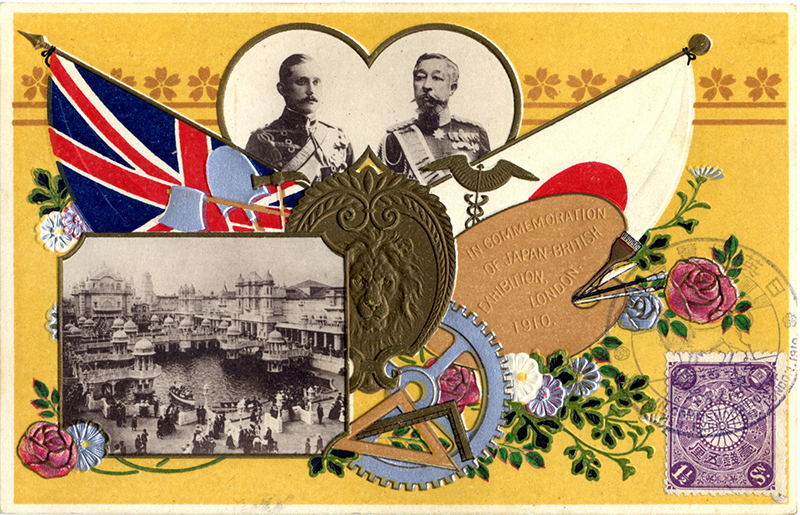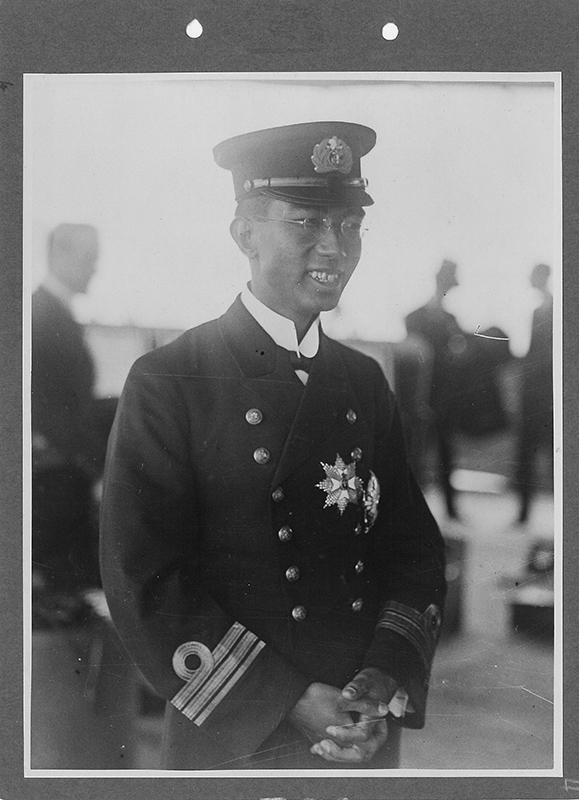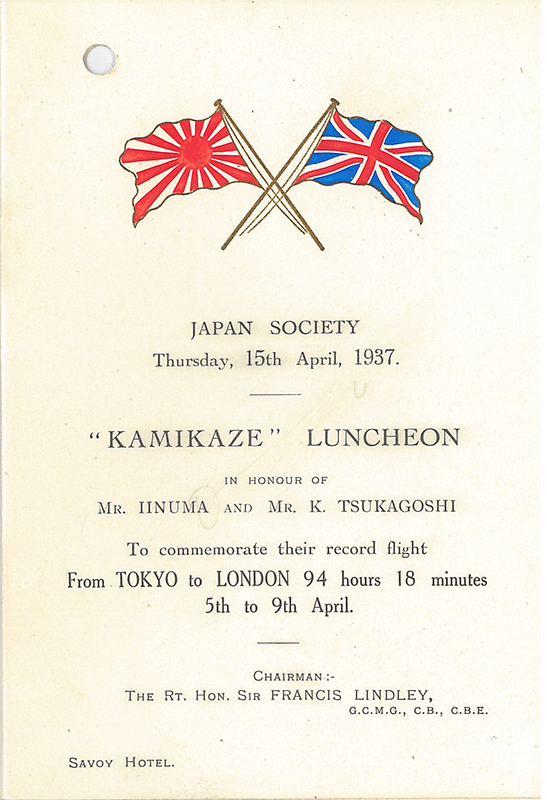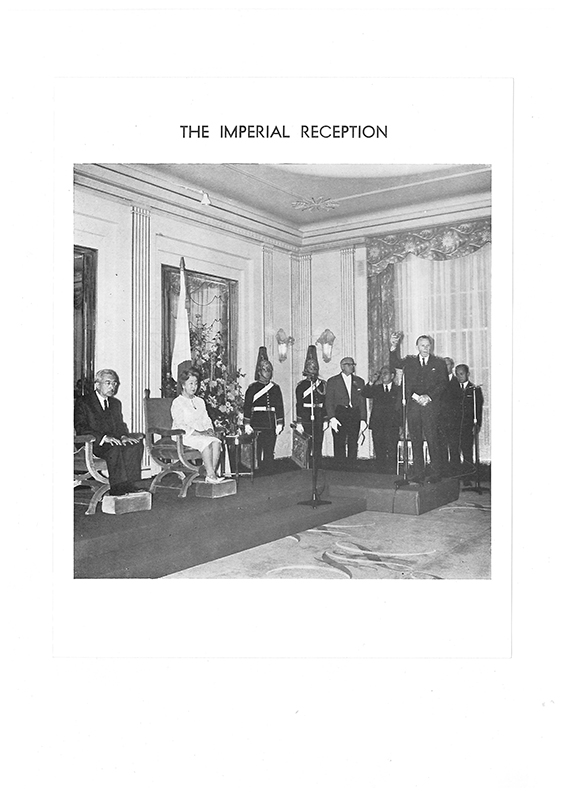A Brief History
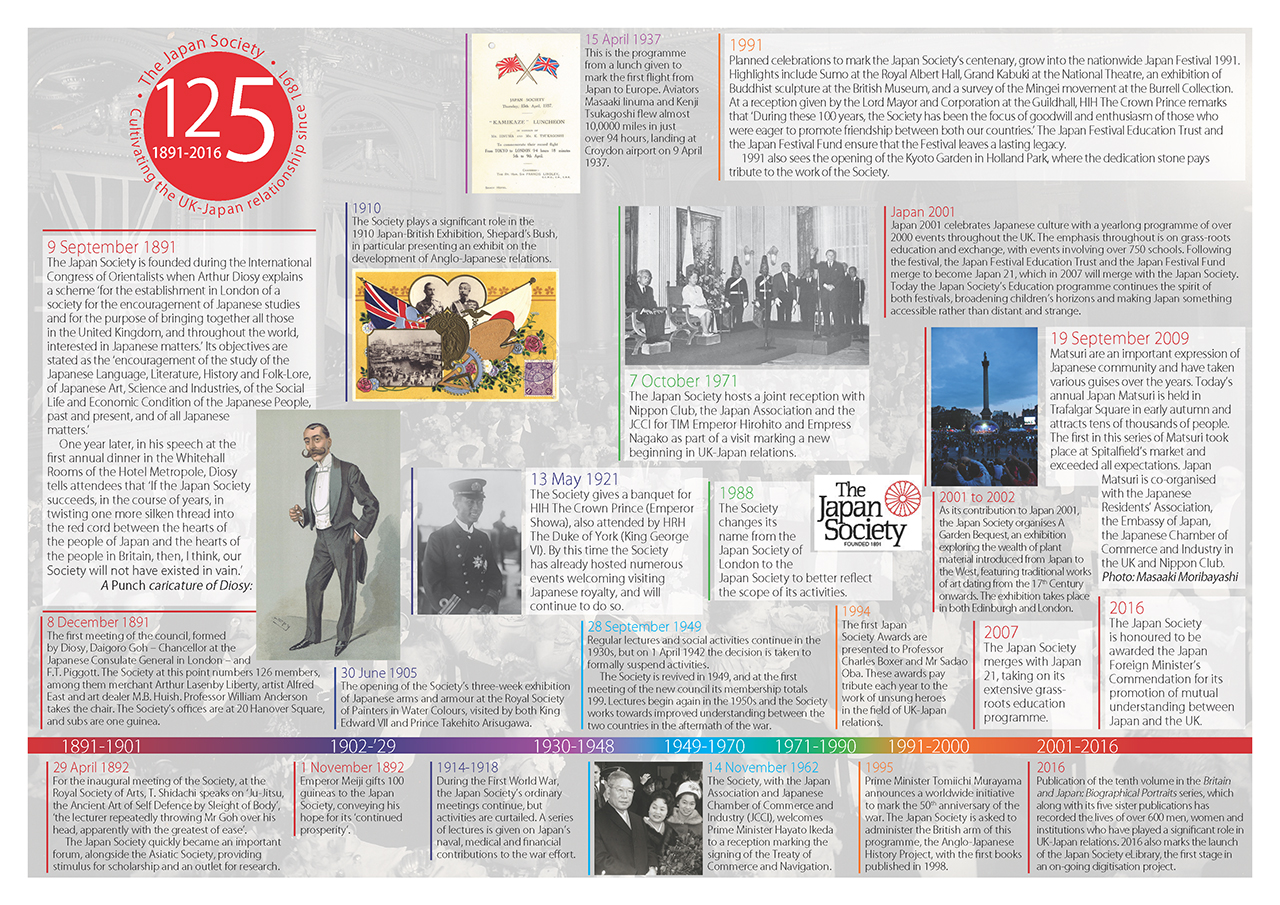
Download Japan Society timeline (PDF)
- 9 September 1891 The Japan Society is founded during the International Congress of Orientalists when Arthur Diosy explains a scheme ‘for the establishment in London of a society for the encouragement of Japanese studies and for the purpose of bringing together all those in the United Kingdom, and throughout the world, interested in Japanese matters.’ Its objectives are stated as the ‘encouragement of the study of the Japanese Language, Literature, History and Folk-Lore, of Japanese Art, Science and Industries, of the Social Life and Economic Condition of the Japanese People, past and present, and of all Japanese matters.’
One year later, in his speech at the first annual dinner in the Whitehall Rooms of the Hotel Metropole, Diosy tells attendees that ‘If The Japan Society succeeds, in the course of years, in twisting one more silken thread into the red cord between the hearts of the people of Japan and the hearts of the people in Britain, then, I think, our Society will not have existed in vain.’xx - 8 December 1891 The first meeting of the Council, formed by Diosy, Daigoro Goh – Chancellor at the Japanese Consulate General in London – and F.T. Piggott. The Society at this point numbers 126 members, among them merchant Arthur Lasenby Liberty, artist Alfred East and art dealer M.B. Huish. Professor William Anderson takes the chair. The Society’s offices are at 20 Hanover Square, and subs are one guinea.
- 29 April 1892 For the inaugural meeting of the Society, at the Royal Society of Arts, T. Shidachi speaks on ‘Ju-Jitsu, the Ancient Art of Self Defence by Sleight of Body’, ‘the lecturer repeatedly throwing Mr Goh over his head, apparently with the greatest of ease’. The Japan Society quickly becomes an important forum, alongside the Asiatic Society, providing stimulus for scholarship and an outlet for research.
- 1 November 1892 Emperor Meiji gifts 100 guineas to The Japan Society, conveying his hope for its ‘continued prosperity’.
- 30 June 1905 The opening of the Society’s three-week exhibition of Japanese arms and armour at the Royal Society of Painters in Water Colours, visited by both King Edward VII and Prince Takehito Arisugawa.
- 1910 The Society plays a significant role in the 1910 Japan-British Exhibition, Shepherd’s Bush, in particular presenting an exhibit on the development of Anglo-Japanese relations.
- 13 May 1921 The Society gives a banquet for HIH The Crown Prince (Emperor Showa), also attended by HRH The Duke of York (King George VI). By this time the Society has already hosted numerous events welcoming visiting Japanese royalty, and will continue to do so.
- 15 April 1937 The Society gives a lunch given to mark the first flight from Japan to Europe. Aviators Masaaki Iinuma and Kenji Tsukagoshi flew almost 10,0000 miles in just over 94 hours, landing at Croydon airport on 9 April 1937.
- 28 September 1949 Regular lectures and social activities continue in the 1930s, but on 1 April 1942 the decision is taken to formally suspend activities. The Society is revived in 1949, and at the first meeting of the new council its membership totals 199. Lectures begin again in the 1950s and the Society works towards improved understanding between the two countries in the aftermath of the war.
- 14 November 1962 The Society, with the Japan Association and Japanese Chamber of Commerce and Industry (JCCI), welcomes Prime Minister Hayato Ikeda to a reception marking the signing of the Treaty of Commerce and Navigation.
- 7 October 1971 The Japan Society hosts a joint reception with Nippon Club, the Japan Association and the JCCI for TIM Emperor Hirohito and Empress Nagako as part of a visit marking a new beginning in UK-Japan relations.
- 1988 The Society changes its name from The Japan Society of London to The Japan Society to better reflect the scope of its activities.
- 1991 Planned celebrations to mark The Japan Society’s centenary grow into the nationwide Japan Festival 1991. Highlights include Sumo at the Royal Albert Hall, Grand Kabuki at the National Theatre, an exhibition of Buddhist sculpture at the British Museum, and a survey of the Mingei movement at the Burrell Collection. At a reception given by the Lord Mayor and Corporation at the Guildhall, HIH The Crown Prince remarks that ‘During these 100 years, the Society has been the focus of goodwill and enthusiasm of those who were eager to promote friendship between both our countries.’ The Japan Festival Education Trust and the Japan Festival Fund ensure that the Festival leaves a lasting legacy. 1991 also sees the opening of the Kyoto Garden in Holland Park, where the dedication stone pays tribute to the work of the Society.
- 1994 The first Japan Society Awards are presented to Professor Charles Boxer and Mr Sadao Oba. These awards pay tribute each year to the work of unsung heroes in the field of UK-Japan relations.
- 1995 Prime Minister Tomiichi Murayama announces a worldwide initiative to mark the 50th anniversary of the war. The Japan Society is asked to administer the British arm of this programme, the Anglo-Japanese History Project, with the first books published in 1998.
- 2001 Japan 2001 celebrates Japanese culture with a yearlong programme of over 2000 events throughout the UK. The emphasis throughout is on grass roots education and exchange, and it includes events involving over 750 schools. Following the festival, the Japan Festival Education Trust and the Japan Festival Fund merge to become Japan 21, which in 2007 will merge with The Japan Society. Today The Japan Society’s Education programme continues the spirit of both festivals, broadening children’s horizons and making Japan something accessible rather than distant and strange.
- 2001 to 2002 As its contribution to Japan 2001, The Japan Society organises A Garden Bequest, an exhibition exploring the wealth of plant material introduced from Japan to the West, featuring traditional works of art dating from the 17th Century onwards. The exhibition takes place in both Edinburgh and London.
- 2007 The Japan Society merges with Japan 21, taking on its extensive grass roots education programme.
- 19 November 2009 The first in the current series of Japan Matsuri takes place at Spitalfield’s market and exceeds all expectations. Matsuri are an important expression of Japanese community and, in the UK, have taken various guises over the years. This annual event is held in Trafalgar Square in early autumn and attracts tens of thousands of people. Japan Matsuri is co-organised with the Japan Association, the Embassy of Japan, the Japanese Chamber of Commerce and Industry in the UK and Nippon Club.
- 2016 The Japan Society is honoured to be awarded the Japan Foreign Minister’s Commendation for its promotion of mutual understanding between Japan and the UK. The Society also published the tenth volume in the Britain and Japan: Biographical Portraits series, which along with its five sister publications has recorded the lives of over 600 men, women and institutions who have played a significant role in UK-Japan relations. 2016 also marks the launch of The Japan Society e-Library, the first stage in an on-going digitisation project.


